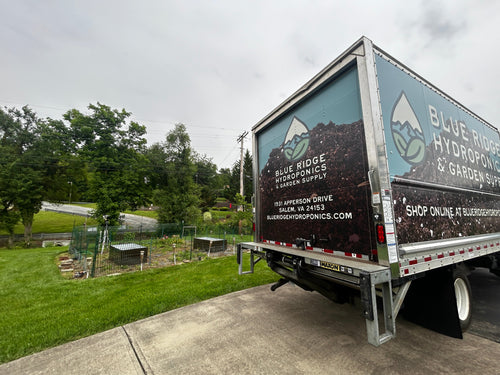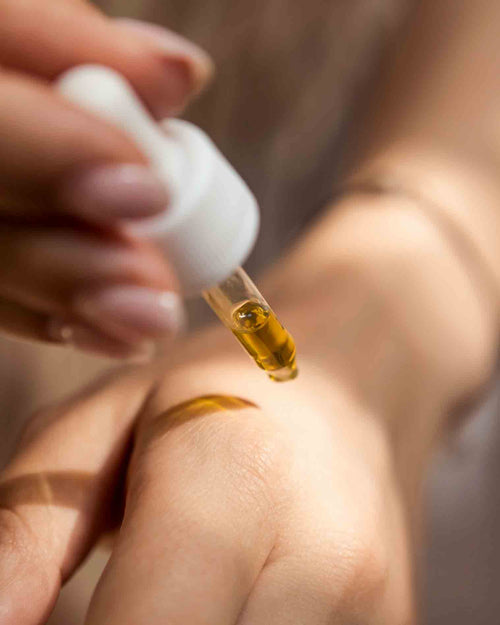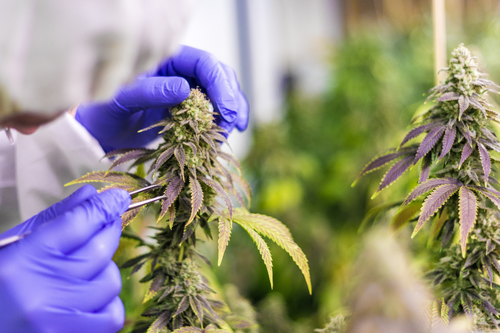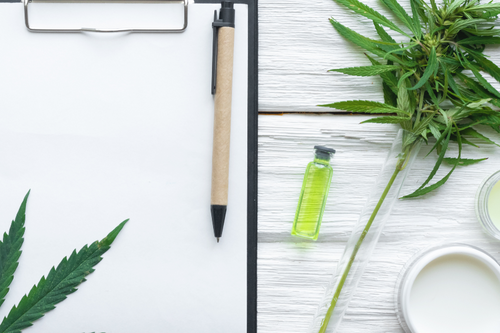The Long Road to Cannabis Prohibition

The Long Road to Cannabis Prohibition (and Back Again) Well, it’s here.
We have arrived in the first month of legalized cannabis in Virginia. For most of us old enough to now legally partake (like alcohol, that cutoff age is 21), this is an event that would have seemed unthinkable earlier in our lifetimes.
80s and 90s kids went through the DARE program, watched ominous ads of eggs frying representing our drugged brains, and almost certainly saw a character (but not a main one and probably one we’d never see again) on one of our favorite TV programs struggle with and eventually overcome the temptation of “weed” or “dope” with the help of a more major and somehow less morally corruptible main character.
In the 60 and 70s young people saw smoking marijuana as transgressive and rebellious and a way to “free your mind”. They went on to see some of the harshest prohibitive laws come into effect.
But oddly, cannabis spent a lot less time as illegal than it did as legal and a normal part of American life. So why does this seem so momentous and to some, even controversial?
Buckle up. This will be a long, strange trip. An Important Crop
In early colonial America, cannabis was an important crop. Hemp was a major textile and one of the main sources of fabric and rope for the colonists. Most reports agree that this was a different strain of cannabis than is produced for its THC today.
Hemp has always been a durable material and as such it was used for the sails and ropes in ship riggings and for creating (scratchy) clothing for the people farming it. Interestingly, right here in Virginia, in 1619 the General Assembly passed a law requiring farmers to devote a portion of their land to growing hemp because it was such a necessary crop.
Hemp was even used as currency in the Virginia Colony along with Maryland and Pennsylvania.
It wasn’t until the rise of cotton, which was understandably more popular as clothing fabric that hemp’s growth began to dwindle. After the Civil War, hemp had lost popularity as a textile.
A Drug Store Staple
The absence of hemp in American wardrobes and closets in the late 1800s and early 1900s did not mean a lack of cannabis in American life.
On the contrary, the THC heavier strain of cannabis that tends to get the most press today was already making a splash in our drugstores in the early 1800s.
Cannabis extract was used than for many of the same medicinal uses that doctors prescribe cannabis today – anxiety, nausea and lack of appetite.
Less common at the time (at least in this country) was the smoking of cannabis. The burning and smoking of cannabis had been present since at least the ancient Greeks but somehow never fully caught on in the US until the early 1900s.
A Blight on Our Communities
Once people started having fun, it was time to put things to an end.
So cannabis had been sewn into the literal and figurative fabric of the United States since the beginning. Later cannabis was a well-known and accepted part of life here – a way to relax and unwind through an over the counter candy or tincture. But then things changed. What changed then and why? Well, the answer, along with so many other answers in American history, is inseparable from racism.
A couple of events in the early 1900s led us to the prohibition of cannabis that has been its dominant thread in our lifetimes. These events were the Great Depression and the Mexican Revolution.
Due to the carnage of the Mexican Revolution, many immigrants had fled across the border to the United States to start new lives somewhere less war-torn. With new groups of people entering, come new customs and unfortunately fear.
Some of the Mexican immigrants introduced smoking what they called marihuana to the American population.
While Cannabis was well known in the US, marijuana was not. And since it was associated with a specific group of people, it was easy to demonize.
This was particularly true once the Great Depression hit.
When jobs are scarce, history shows that people turn on each other. And with people from Mexico here, they were an easy target. So a flurry of anti-immigration and anti-Mexican sentiment began. And with it came a dislike of a custom they had brought – marijuana.
The Murder Drug
From 1920 to 1933, alcohol prohibition was the law in the United States. Once the 21st Amendment was passed in 1933 we needed another boogeyman. And one that was readily available was Marijuana.
Harry Anslinger, head of the Narcotics Bureau from 1930 to 1962, with help from William Randolph Hearst and other sensationalist publishers used the association of marijuana with immigrants and later the lower classes and the black community to create a fear campaign. Anslinger himself wrote an article in 1937 for American Magazine entitled Marijuana, “Assassin of Youth.”
With subtle warnings like that it’s unsurprising that the same year the Marijuana Tax Act was passed. This law regulated and taxed Marijuana but also effectively criminalized it.
Anslinger and his supporters had little patience for naysayers like the American Medical Association and the American Bar Association who felt penalties were becoming too harsh or New York Mayor a
For years cannabis was then associated with crime and “the other.”
Cannabis Comes to Campus
In the 1960s pot began to be associated with a new subgroup – college students. The counter culture movement had actually begun before that in the 1950s with the beatniks but as America was now beginning to see white middle class young people partaking in the drug, a new familiarity with the cannabis was beginning.
Before anyone could get too comfortable though, the 70s came along. In 1970 Richard Nixon signed the Controlled Substances Act repealing the Marijuana Tax Act and making a marijuana a Schedule 1 drug, grouping it in with heroin as a drug with no medical use and a high potential for abuse.
Through the 80s the War on Drugs continued, Nancy Reagan said “Just Say No,” and the aforementioned informercials and “very special episodes” became prevalent. More seriously, millions of nonviolent people were sent to prison for marijuana possession.
More recently some American lawmakers have come to a reckoning. They say the harm that retributive laws have created for communities across the country, especially lower income and minority communities.
Fiorello LaGuardia
publishing findings that it was relatively harmless.
nd the New York Academy of Medicine
The thought of a marijuana as a “murder drug” that caused people to go insane and
commit heinous crimes is perhaps best exemplified in the infamous 1936 film Reefer
Madness.
As a result, many states and localities, including Virginia have been passing cannabis legalization measures. We can hope this will continue and the people who have suffered from it will be able to live normal lives again.
For now, Virginians are living in a state that has legalized cannabis even if the country as a whole is not yet on the same page.
Share
Related Posts
-

Grow Green All Year: Indoor Gardening with Blue Ridge Hydroponics & Garden Supply
When the temperatures drop or the summer sun fades, your garde...
-

Your Guide to Raised Bed Gardening in the New River Valley: Soil, Seeds, and Supplies from Blue Ridge Hydroponics & Garden Supply
If you’ve ever dreamed of growing your own vegetables, herbs, ...
-

Top Organic Nutrients for Hydroponic Gardening: What You Should Use
Growing cannabis hydroponically offers numerous benefits, incl...
-

Gift Guide for Hydroponic Gardeners: Perfect Presents for the Holidays
The holiday season is the perfect time to celebrate and apprec...
-

How to Store and Preserve Your Cannabis Harvest
After months of careful cultivation and nurturing, you’ve fina...
-

Preparing Your Hydroponic Garden for Harvest Season
As the harvest season approaches, preparing your hydroponic ga...
-

Maximizing Your Hydroponic Harvest: Tips for a Bountiful Season
Recent Blogs ...
-

Step-by-Step Guide to Setting Up a Basic Hydroponic System for Cannabis
Growing cannabis using a hydroponic system can be highly effic...
-

How to Plan Your Hydroponic Garden for Continuous Harvest Through the Holidays
The holiday season is a time for celebration, family gatherin...
-

The Ultimate Starter Kit for Growing Cannabis at Home
Starting your own cannabis garden at home can be an incredibly...
-

Embracing Nature's Canvas: Growing Cannabis in the Ground Outdoors
When it comes to cultivating cannabis, there's an art to it th...
-

Unlocking Potential: Growing Cannabis in Deep Water Culture (DWC) Hydroponics
For cannabis enthusiasts looking to push the boundaries of tra...
-

Blue Ridge Hydroponics Grows Under New Female Ownership
Brynnen Beierle looks forward to expanding the business...
-

Harvesting Cannabis
Now you know your cannabis history, you know the laws and you ...
-

How Have the Virginia Cannabis Laws Changed?
How Have the Virginia Cannabis Laws Changed? Across the coun...
-

How Do I Grow Cannabis?
So, you’ve been following the news, you know the laws (and if ...
-

Is 7/1 the new 4/20?
Is 7/1 the new 4/20? Unless you’ve been living on the dark s...


















